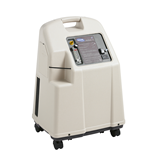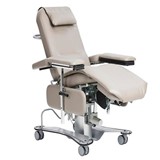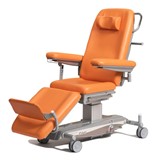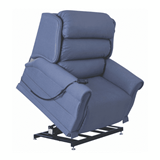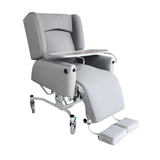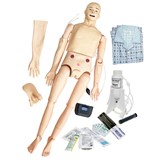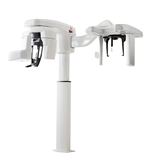Buying an intraoral scanner in Australia? Explore prices, financing, maintenance & compliance to make the right choice for your dental clinic.
Key Takeaways
- Price Range: Intraoral scanners in Australia typically range from $20,000 to $70,000, with factors like brand, features, and scanner type influencing the cost.
- Types of Scanners: There are mainly two types—wireless and wired intraoral scanners. Wireless scanners tend to be more expensive but offer greater mobility.
- Maintenance: Routine maintenance costs are generally between $1,000 to $2,500 annually, depending on the model.
- Financing Options: Equipment financing is common, with leasing options available for those seeking cash flow management.
- Compliance and Certification: Ensure the scanner meets Australian Therapeutic Goods Administration (TGA) and ISO 13485 certifications to comply with medical device regulations.
- Warranty: Warranties typically range from 1 to 5 years, depending on the provider and model, with extended support options often available.
Intraoral scanners are becoming increasingly popular in dental practices across Australia due to their efficiency, precision, and ability to enhance patient experience. Whether you are looking to upgrade your current dental equipment or purchase a brand new intraoral scanner, it's essential to make an informed decision. This guide is designed to help you understand the pricing, types, maintenance, and buying process of intraoral scanners, with a special focus on compliance and financing options. With actionable insights and up-to-date information, you’ll be equipped to make the right choice for your practice.
Types of Intraoral Scanners
There are two main types of intraoral scanners: wireless and wired scanners. Each type offers its own advantages, and the best choice will depend on your practice's needs.
1. Wireless Intraoral Scanners
- Benefits: Greater flexibility and mobility, as there are no cables to manage.
- Price Range: Typically priced between $30,000 to $70,000.
- Popular Models: Medit i500, 3Shape TRIOS 4.
- Best For: Practices that require high mobility or multi-chair setups.
2. Wired Intraoral Scanners
- Benefits: Generally more affordable and have stable, high-speed connections for scanning.
- Price Range: Typically priced between $20,000 to $45,000.
- Popular Models: Carestream CS 3700, Planmeca Emerald.
- Best For: Smaller practices or those that prioritise cost-effectiveness.
Price Breakdown and Buying Considerations
Intraoral scanners come in a range of prices, and the final cost will depend on various factors such as the brand, features, and additional equipment.
- Entry-Level Scanners: Around $20,000 to $35,000. These scanners typically have fewer features but offer good quality for general scanning needs.
- Mid-Range Scanners: Around $35,000 to $50,000. These scanners offer improved scanning capabilities, faster processing, and better accuracy.
- High-End Scanners: Around $50,000 to $70,000. These include the latest technology, enhanced software, and extensive support services.
Key Features to Look For
- Scan Accuracy: Look for scanners with an accuracy of at least 10 microns.
- Ease of Use: Consider models with intuitive software and user-friendly interfaces.
- Speed: Opt for models with faster scan speeds for better patient throughput.
- Compatibility: Ensure the scanner integrates seamlessly with your existing practice management and CAD software.
Operations of an Intraoral Scanner
An intraoral scanner allows for digital impressions of a patient's teeth, replacing the need for traditional impressions. Here’s how it works:
- Scanning Process: The scanner uses optical or laser technology to capture detailed images of the teeth and gums. This data is then converted into a digital 3D model.
- Software Integration: The digital impressions are sent to the practice’s software for analysis, modelling, and storage. Most scanners have CAD compatibility for crown, bridge, and implant design.
Maintenance and Care
Maintaining your intraoral scanner is critical for ensuring its longevity and continued accuracy.
Routine Maintenance
- Cleaning: Regular cleaning of the scanner’s handpiece and scanning tip is necessary. Use alcohol-free wipes or specially designed cleaning products.
- Calibration: Check the calibration of the scanner periodically to ensure scan accuracy.
- Annual Service: Expect to pay around $1,000 to $2,500 annually for routine servicing and software updates, depending on the brand.
Repairs
Repairs may range from $500 to $3,000 based on the issue and warranty coverage.
Parts and Accessories
In addition to the main scanner, you might need certain accessories to enhance performance or meet specific requirements:
- Replacement Tips: Scan tips may need to be replaced every 12 to 18 months.
- Chargers: For wireless models, charging stations or replacement chargers may be required.
- Protective Covers: To avoid wear and tear on the handpiece.
Financing Options
Purchasing an intraoral scanner is a significant investment, and many practices turn to financing options to spread the cost over time. Here are some options:
- Leasing: A common option for dental practices in Australia. Leasing allows you to rent the equipment with an option to buy later. Lease terms typically range from 3 to 5 years.
- Loans: Traditional business loans or specific equipment loans are available, offering longer repayment periods.
- Pay-As-You-Go: Some providers offer payment plans based on usage.
Financing can also help with cash flow management, especially if you are just starting or upgrading your practice.
Warranties and Support
Warranties on intraoral scanners typically range from 1 to 5 years, with some companies offering extended support packages.
- Coverage: Warranties usually cover hardware and software defects, and some include free maintenance services.
- Extended Support: For added peace of mind, consider an extended warranty that includes annual maintenance and software updates.
Compliance and Certification Considerations
In Australia, all medical devices, including intraoral scanners, must meet strict regulatory standards to ensure safety and effectiveness.
1. Therapeutic Goods Administration (TGA)
The TGA ensures that all medical devices sold in Australia meet high standards. Before purchasing, verify that the intraoral scanner is TGA-approved.
2. ISO 13485 Certification
This international standard ensures that the manufacturer maintains high-quality management practices. Look for scanners from brands with ISO 13485 certification.
3. Radiation Safety Standards
Although intraoral scanners do not use radiation, it is important to ensure that your dental practice complies with local radiation safety regulations if other equipment such as X-rays is used.
Training and Staff Adoption: Ensuring a Smooth Transition
Even the best scanner will be ineffective if your team struggles to use it efficiently.
How to Ensure Staff Adoption:
- Manufacturer Training: Check if the provider offers hands-on training sessions.
- On-Demand Support: Choose brands that offer 24/7 online support, tutorials, and help desks.
- Ease of Learning: User-friendly interfaces reduce training time—3Shape TRIOS and Medit i700 are known for intuitive workflows.
Common Questions About Intraoral Scanners
1. What is the lifespan of an intraoral scanner?
The lifespan of an intraoral scanner generally ranges from 5 to 10 years, depending on how well it is maintained and how frequently it is used.
2. How often do I need to replace the scanning tips?
Scanning tips typically need replacement every 12 to 18 months or earlier if they become damaged or worn.
3. Are there training resources available?
Yes, most manufacturers offer training and customer support. Some also provide online tutorials, webinars, and on-site training sessions.
4. Can I integrate my intraoral scanner with other dental software?
Most modern intraoral scanners are designed to integrate with a wide range of dental software, including CAD/CAM systems for designing crowns, bridges, and implants.
5. Is there any ongoing cost after the initial purchase?
Yes, there may be ongoing costs for software updates, maintenance, and replacement parts. Some providers also charge for additional services or updates.
Conclusion
Choosing the right intraoral scanner is a significant decision for your dental practice, with factors such as price, features, and compliance playing a key role. By considering your practice's needs, budget, and financing options, and ensuring the scanner meets regulatory standards, you’ll be well-equipped to make a sound investment. Whether you opt for a wireless or wired model, a thorough understanding of the equipment’s operations, maintenance needs, and warranty coverage will ensure long-term satisfaction and optimal patient care.


-160x160-state_article-rel-cat.png)



